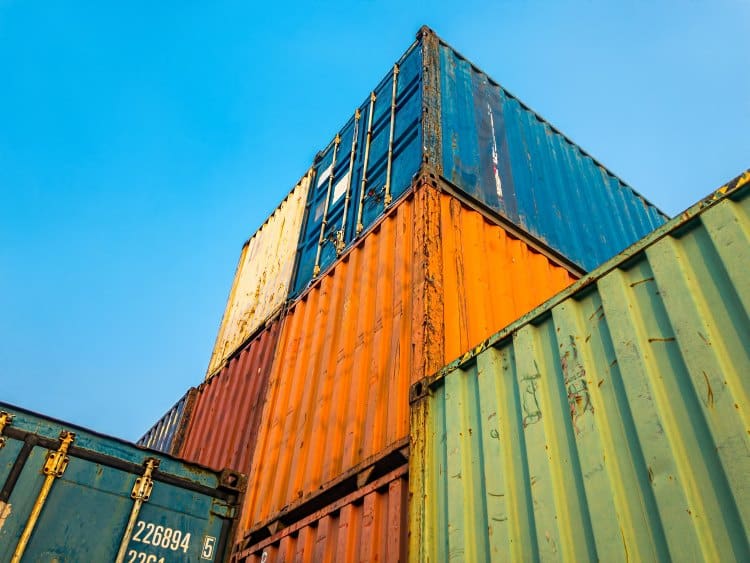In the intricate web of global supply chains, businesses constantly seek efficient, cost-effective, and reliable methods to move goods from origin to destination. One solution that has gained prominence in recent years is transloading. As a logistics strategy, transloading provides numerous benefits that can significantly enhance your business operations. Let’s delve into what transload solutions entail and explore the myriad ways they can benefit your business.
What is Transloading?
Transloading is the process of transferring cargo from one mode of transportation to another. This typically involves moving goods from ocean containers to trucks or railcars (or vice versa) to continue their journey to the final destination. The primary goal of transloading is to optimize the supply chain by leveraging the strengths of different transportation modes, thereby enhancing efficiency, reducing costs, and improving delivery times.
The Transloading Process
The transloading process begins when cargo arrives at a port or rail yard. Here’s a step-by-step breakdown of a typical transloading operation:
- Arrival and Inspection: Goods arrive at a port, rail yard, or a transload facility. They are inspected to ensure they are intact and match the shipping documents.
- Unloading: Cargo is unloaded from the initial mode of transport (e.g., a ship or railcar).
- Sorting and Palletizing: Items are sorted based on their final destination. If necessary, they are repackaged or palletized to facilitate easier handling and transportation.
- Loading onto Secondary Transport: The sorted goods are loaded onto the next mode of transportation—typically trucks for inland delivery.
- Final Delivery: The cargo is transported to its final destination, whether it’s a distribution center, retail store, or directly to the customer.
Benefits of Transload Solutions
1. Cost Efficiency
One of the most significant advantages of transloading is cost savings. By optimizing the use of different transportation modes, businesses can lower shipping costs. For instance, ocean freight is generally cheaper for long distances, while trucks offer more flexibility for last-mile deliveries. By combining these modes effectively, businesses can reduce overall transportation costs.
2. Enhanced Flexibility
Transloading provides a high degree of flexibility, allowing businesses to adapt to changing market conditions and customer demands. For example, if there’s a disruption in one transportation mode, goods can be quickly shifted to an alternative mode to avoid delays. This adaptability ensures a more resilient supply chain.
3. Faster Delivery Times
By strategically using transloading, businesses can expedite delivery times. Goods can be moved quickly from congested ports to less crowded inland distribution centers, reducing bottlenecks and ensuring faster transit to the final destination. This speed is crucial for perishable goods and time-sensitive deliveries.
4. Inventory Management
Transloading can also improve inventory management. By centralizing goods at a transload facility, businesses can better manage inventory levels, reduce storage costs, and streamline distribution. This centralization allows for quicker response times to customer orders and improved overall inventory accuracy.
5. Environmental Benefits
Utilizing rail or sea transport for the long-haul portion of a journey, combined with trucking for final delivery, can reduce the overall carbon footprint of shipping operations. Rail and sea transport are generally more fuel-efficient and produce fewer emissions compared to long-haul trucking. This environmentally friendly approach not only benefits the planet but can also enhance a company’s reputation as a responsible business.
6. Reduced Risk of Damage
Transloading allows for careful handling and inspection of goods at various stages of the journey. By breaking down shipments and repackaging them for final delivery, businesses can minimize the risk of damage during transit. This attention to detail ensures that products arrive at their destination in optimal condition.
Case Studies of Transloading Success
Case Study 1: Retail Giant
A major retail company implemented transloading to streamline its supply chain operations. By transloading goods from ocean containers to trucks at a coastal facility, the company reduced its reliance on long-haul trucking. This change led to a 20% reduction in transportation costs and improved delivery times to stores across the country. Additionally, the retailer was able to better manage inventory levels and respond more swiftly to market demand.
Case Study 2: Automotive Industry
An automotive manufacturer utilized transloading to import parts from overseas suppliers. By transloading these parts at a port facility and transporting them via rail to a central distribution center, the manufacturer reduced lead times and lowered transportation costs. This approach also allowed for better coordination of just-in-time inventory, ensuring that production lines remained operational without excess inventory.
Implementing Transload Solutions with PortCity
At PortCity, we specialize in providing comprehensive transload solutions tailored to meet the unique needs of your business. Our state-of-the-art facilities, strategic location, and experienced team ensure that your goods are handled with the utmost care and efficiency.
Our Services Include:
- Customizable Transloading Plans: We develop tailored transloading strategies that align with your specific business requirements.
- Advanced Technology: Our facilities are equipped with the latest technology to ensure seamless tracking, handling, and distribution of goods.
- Expert Staff: Our team of logistics experts is dedicated to optimizing your supply chain and ensuring timely delivery of your products.
- Sustainability Initiatives: We are committed to environmentally responsible practices, helping you reduce your carbon footprint while maintaining cost efficiency.
In today’s competitive market, businesses must continuously seek ways to improve their supply chain operations. Transload solutions offer a strategic approach to optimizing transportation, reducing costs, and enhancing overall efficiency. By leveraging the strengths of multiple transportation modes, businesses can achieve faster delivery times, better inventory management, and significant cost savings.
At PortCity, we are dedicated to providing top-notch transload solutions that drive your business forward. Contact us today to learn more about how our transloading services can benefit your business and help you stay ahead in the ever-evolving logistics landscape.
